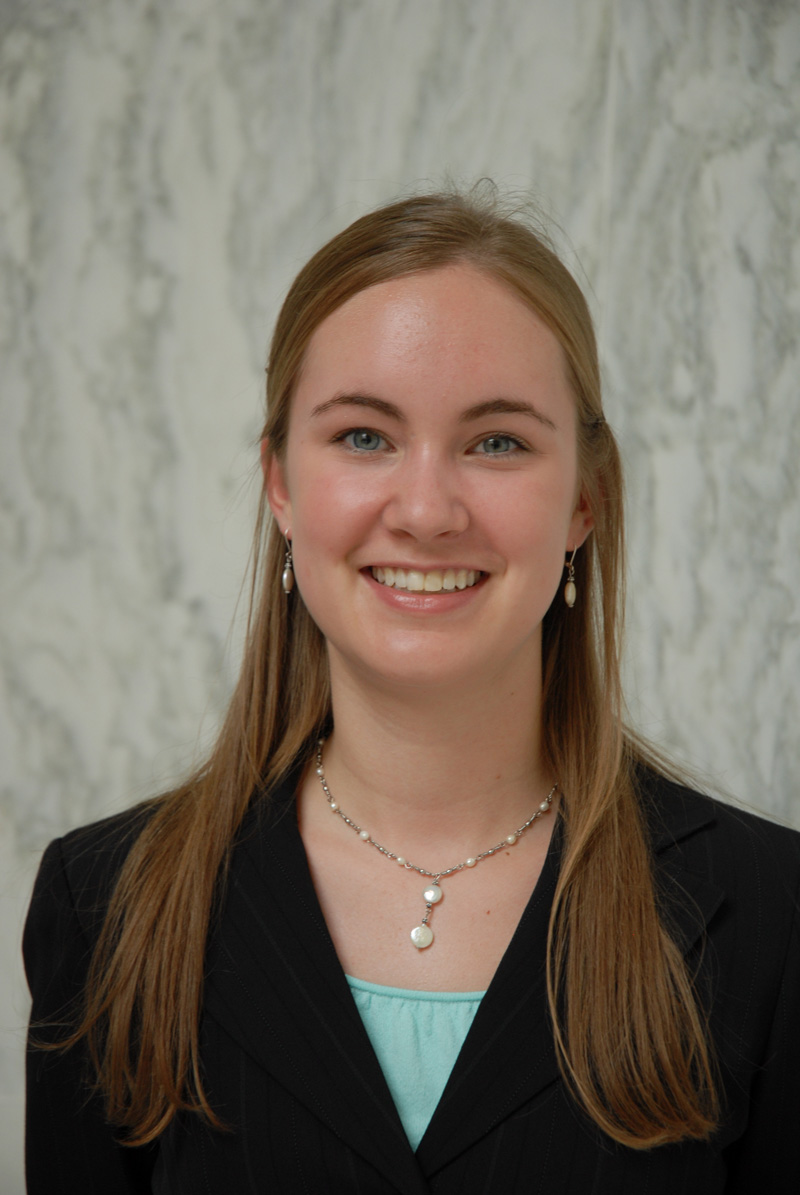Aug. 18, 2006 —What would you do in the event of an emergency? Would you know how to respond to a chemical or biological threat, a hurricane or flood, a nuclear attack? If faced with a natural or man-made disaster, would you be ready … really ready?
ReallyReady.org, the Federation of American Scientists’ (FAS) new emergency preparedness Web site, launched on August 1, 2006, with a current SEAS student at its helm. Modeled after the U.S. Department of Homeland Security’s Ready.gov, ReallyReady.org was created by Emily Hesaltine, a rising third-year in systems engineering and economics at U.Va.
Through the Engineering School’s Science and Technology Policy Internship Program, Hesaltine developed the site, which addresses inaccurate and incomplete information found on the DHS portal, in just nine weeks. Ready.gov has been the subject of much criticism since its 2003 launch.
ReallyReady.org includes an evaluation of the government site and, Hesaltine says, “offers clearer and less confusing recommendations for emergency preparedness and response. ... [ReallyReady.org] is easier to use and understand.”
As a result of Hesaltine’s work with the FAS site, she and ReallyReady.org have been the subjects of a great deal of media attention. In the days immediately following the launch, her story was told by ABC, CNN, The Washington Post, several radio stations and countless blogs throughout the country and world. With headlines like “Is DHS Site Really Ready? Science Intern Thinks Not” and “20-Year-Old Takes on Homeland Security,” articles and broadcasts told of how Hesaltine’s site was giving the DHS “a run for its money.”
“The big problems that we found [on Ready.gov] are inaccurate information, generic advice, redundant details and lengthy descriptions,” Hesaltine told ABC News. For example, the DHS site advises the public to go around a corner in the event of a nuclear explosion nearby. Hesaltine explained, “A small nuclear bomb like one a terrorist would use would probably have a radius of destruction greater than a mile, so going around a corner really wouldn’t really help you that much.”
Hesaltine was one of 13 students to participate in the 2006 SEAS Science and Technology Policy Internship Program this summer. Below is a complete list of the student interns, the organizations in which they were placed and the title of their internship research projects, which they presented at a Washington, D.C., symposium on August 3, 2006.
The SEAS Science and Technology Policy Internship Program is administered through the Department of Science, Technology and Society and is funded by donations from SEAS alumni and friends. For more information, please visit www.sts.virginia.edu/wip.
ReallyReady.org, the Federation of American Scientists’ (FAS) new emergency preparedness Web site, launched on August 1, 2006, with a current SEAS student at its helm. Modeled after the U.S. Department of Homeland Security’s Ready.gov, ReallyReady.org was created by Emily Hesaltine, a rising third-year in systems engineering and economics at U.Va.
Through the Engineering School’s Science and Technology Policy Internship Program, Hesaltine developed the site, which addresses inaccurate and incomplete information found on the DHS portal, in just nine weeks. Ready.gov has been the subject of much criticism since its 2003 launch.
ReallyReady.org includes an evaluation of the government site and, Hesaltine says, “offers clearer and less confusing recommendations for emergency preparedness and response. ... [ReallyReady.org] is easier to use and understand.”
As a result of Hesaltine’s work with the FAS site, she and ReallyReady.org have been the subjects of a great deal of media attention. In the days immediately following the launch, her story was told by ABC, CNN, The Washington Post, several radio stations and countless blogs throughout the country and world. With headlines like “Is DHS Site Really Ready? Science Intern Thinks Not” and “20-Year-Old Takes on Homeland Security,” articles and broadcasts told of how Hesaltine’s site was giving the DHS “a run for its money.”
“The big problems that we found [on Ready.gov] are inaccurate information, generic advice, redundant details and lengthy descriptions,” Hesaltine told ABC News. For example, the DHS site advises the public to go around a corner in the event of a nuclear explosion nearby. Hesaltine explained, “A small nuclear bomb like one a terrorist would use would probably have a radius of destruction greater than a mile, so going around a corner really wouldn’t really help you that much.”
Hesaltine was one of 13 students to participate in the 2006 SEAS Science and Technology Policy Internship Program this summer. Below is a complete list of the student interns, the organizations in which they were placed and the title of their internship research projects, which they presented at a Washington, D.C., symposium on August 3, 2006.
- Margaret Bonner, Virginia Secretary of Technology. “Alternative energy research and development in Virginia.”
- Jon Carrier, House Committee on Science, Subcommittee on Research. “Net neutrality.”
- Ben Cooper, Amazon Conservation Team. “Compensation to Amazonian Indians for pharmaceuticals from frogs.”
- Sarah Foster, National Foreign Trade Council. “Peruvian Trade Promotion Act.”
- Emily Hesaltine, Federation of American Scientists. “Emergency Preparedness in the 21st Century: Influencing Policy with Technology.”
- Erin McElroy, National Science Foundation. “Science in UNESCO.”
- Marin Odioso, National Capital Planning Commission. “Evaluation Criteria for the National Capital Planning Commission’s Rail Relocation Initiative.”
- Jeff Rominger, Environmental and Energy Study Institute. “Federal role in green buildings.”
- Jenny Saik, National Institutes of Health. “The Use of Lotteries as Recruitment Tools in Human Subjects Research.”
- Peter Sauerwein, International Relief and Development. “Coca and poppy eradication.”
- Valerie Skinner, White House Office of Science and Technology Policy. “Energy policy.”
- Jonathan Smith, Senate Committee on Commerce, Subcommittee on Science and Technology. “High performance computing.”
- Lee Watson, Federal Government. “Alternative sources of energy: economics and policy.”
The SEAS Science and Technology Policy Internship Program is administered through the Department of Science, Technology and Society and is funded by donations from SEAS alumni and friends. For more information, please visit www.sts.virginia.edu/wip.
Media Contact
Article Information
August 21, 2006
/content/uva-engineering-student-emily-hesaltines-internship-helps-make-america-really-ready

